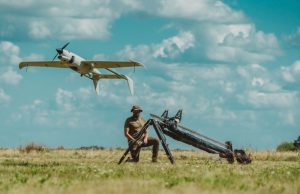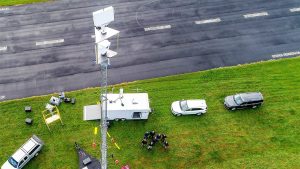Why the Future of the Commercial Drone Industry Is Defined by Asking the Right Questions
The commercial drone industry is experiencing a technological transformation, seemingly driven by breakthroughs in AI, autonomy, advanced sensors, and larger payload capabilities. However, the true driving force is not just the ‘what’ but more profoundly the ‘how’ and ‘why.’ Businesses, regulators, and innovators must ask the right questions to ensure that drones provide authentic value beyond their technology.
Introduction: The Hype and the Hidden Truth
While drone light shows and aerial delivery visions capture public imagination, the real progress involves nuanced dynamics. Companies often focus on drone hardware improvements—faster, cheaper, smarter devices. Yet, the most effective drone implementations start with probing into business needs and processes.
Mark Bathrick, a pioneer in drone programs, notes, “Everything you need to succeed with the technology was there nine years ago and will be there in the exact same way nine years from now.” The real difference lies not in the drones themselves but in how they’re integrated into workflows.
The Four Key Competencies: The Art of Asking “Why?”
Mark Bathrick’s framework for drone success has been updated to reflect four core competencies founded on strategic questioning:
- ROI Quantification: Assess how a drone will resolve practical issues and create tangible value before investing. Initial efforts reveal hidden costs and potential savings, which is more than mere accounting—it’s investigative work.
- Workflow Integration: Instead of imposing a new drone into existing processes, consider how drone data can transform current operations.
- Risk Management: Anticipate unseen or neglected risks, including regulatory, operational, and reputational factors, to avoid negative incidents.
- User Empowerment: Focus on making end users successful, from field teams to analysts and clients relying on insights.
Case studies show that when companies ask straightforward questions, they uncover opportunities and pitfalls that technical specs alone might miss.
Why “Technology-First” Thinking Fails
With the drone market expected to grow from $73 billion in 2024 to over $163 billion by 2030, hype can easily overshadow practical realities. Startups previously raised large sums for diverse applications, but many exited when unable to compete with dominant companies.
Successful entities focused on critical questions such as:
- What are the costs of leaving a problem unsolved?
- How does drone data integrate with current IT systems?
- Is regulatory compliance crucial, and when should agencies be consulted?
- Will the ground staff actually use and trust the drone data?
- What training, maintenance, and support are needed for success?
Major Industry Trends: From AI to BVLOS—But Questions Remain
1. AI and Smart Autonomy
AI-powered drones are advancing tasks in agriculture and construction, such as real-time object detection. Key inquiries include the true utility and safety of autonomy levels and liability for drone decisions.
2. Beyond Visual Line of Sight (BVLOS)
BVLOS operations present expansive market potential, emphasizing the need for safety demonstrations and suitable insurance frameworks.
3. Data Security and Privacy
Increasingly sensitive data handling demands strict security measures. Crucial questions involve data ownership, encryption, and misuse prevention.
4. Market Realignment and Funding Pressures
Plummeted venture investments have pressured startups to pursue clear value provision. Adapting to industry shifts is key.
5. Social Acceptance and Ethical Considerations
Public concerns continue to hinder adoption. Transparency on use and the development of counter-drone policies can build trust.
Real-Life Examples: Asking Better Questions in Action
- Agriculture: A Midwest farm cooperative used aerial data to quickly diagnose issues, leading to investments in multispectral imaging.
- Infrastructure Inspection: Drones integrated into reconnaissance routines reduced utility company incidents.
- Emergency Response: Public safety agencies improved response capabilities by focusing on scale, training, and fleet management.
Expert Tips: How to Ask the Right Drone Questions
- Start with the Problem, Not the Drone
Clarify the challenges before seeking drone solutions. Get insights from all stakeholders including field workers and IT teams. - Demand Measurable Outcomes
Identify KPIs such as reduced downtime or increased customer satisfaction to measure drone program success. - Think Long-Term Integration
Aim for full integration of drone processes into broader systems rather than settling for trial programs. - Engage Regulators and the Public Early
Collaboration with regulators and communities can foster progress and acceptance. - Stay Flexible and Ready to Pivot
Adapting to market changes ensures sustainability, whether transitioning between agriculture and logistics or other sectors.
Voices from the Field: The Human Side of Drone Innovation
Our consulting approach emphasizes that drones are tools, and the genuine impact stems from people, processes, and perceptive questioning. Partnering with diverse stakeholders has led to innovative solutions, as demonstrated by a city council project focused on illegal dumping and public engagement with early positive outcomes.
The Road Ahead: The Companies That Win Will Ask First, Buy Second
The future of commercial drones will be shaped by those who prioritize inquiry over assumption, underscoring the importance of understanding people, processes, and community needs.
Whether initiating a new drone purchase or managing a complex network, let the right questions guide you. Thereby, the potential for industry accomplishments is boundless.
Ready to transform your workflow with drones? Let’s sit down, ask the right questions, and build something that lasts. After all, the future isn’t in the drones themselves. It’s in the problems we choose to solve together.













